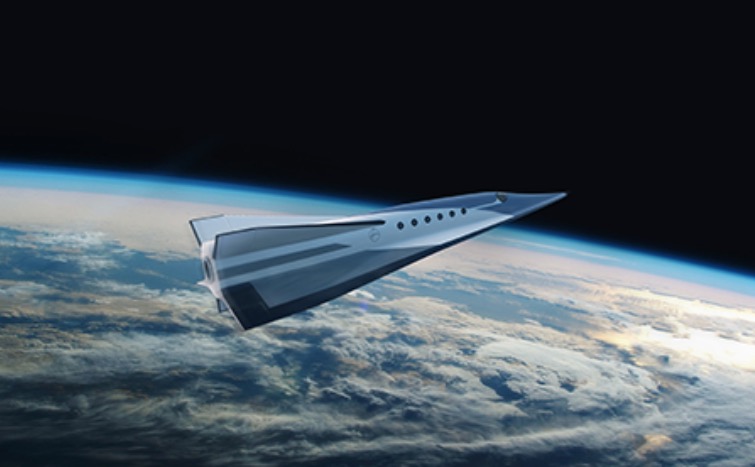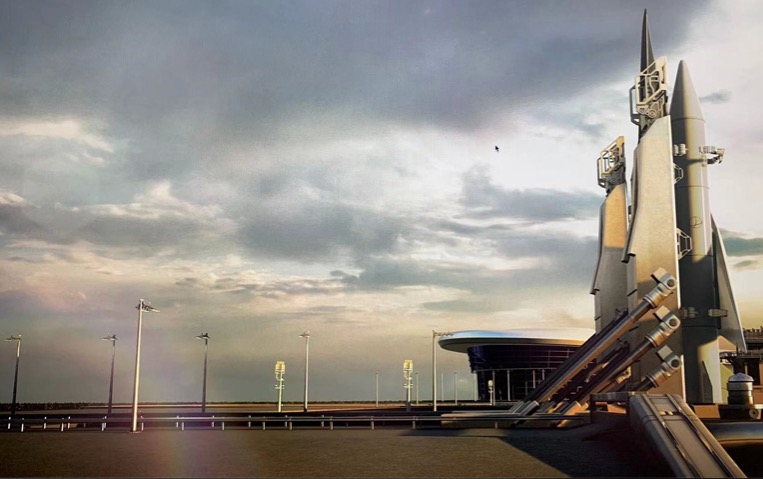Chinese space plane company targets suborbital tourism, point-to-point travel by 2025
Space Transportation has big dreams.

The Chinese company Space Transportation is developing a "rocket with wings" for space tourism and point-to-point travel.
"We are developing a winged rocket for high-speed, point-to-point transportation, which is lower in cost than rockets that carry satellites and faster than traditional aircraft," the company said in a recent interview with Yicheng Times.
The space plane would aim to provide rapid transport between two locations on Earth through suborbital travel and be fully reusable.
Related: The latest news about China's space program

A video presentation on Space Transportation's website demonstrates the ambitious plans. It shows animated passengers boarding a plane attached to a wing powered by rockets. After a vertical takeoff, the plane detaches from the rocket-powered wing and continues its suborbital journey to Dubai in the Middle East, landing vertically on three legs deployed from the rear.
The company, whose full name is Beijing Lingkong Tianxing Technology Co., Ltd., revealed that ground tests are planned by 2023 with a first flight in 2024 and a crewed flight in 2025.
Even more ambitiously, a test flight of a global, or orbital, crewed space vehicle is planned by 2030, the company says. Space Transportation was founded in 2018, according to the company's website.
Get the Space.com Newsletter
Breaking space news, the latest updates on rocket launches, skywatching events and more!
If all of this seems a bit fast, the plans have not appeared out of the blue. Space Transportation announced last August that it had raised $46.3 million for its hypersonic space plane plans, and the company has recently been conducting a number of tests of its Tianxing 1 and Tianxing 2 vehicles. A 10th flight test was conducted on Jan. 23, followed by another test in collaboration with a combustion laboratory belonging to Tsinghua University.
Details about these test flight activities have been limited, possibly due to the sensitive nature of hypersonic-related technologies.
The China Aerospace Science and Technology Corporation (CASC), China's main space contractor, in 2020 and 2021 conducted highly secretive launch tests of suborbital and orbital vehicles from the Jiuquan Satellite Launch Center as part of a space plane development program.
Other space plane projects are underway across the globe. Most notably, Virgin Galactic conducted a fully crewed suborbital flight of its VSS Unity vehicle in July last year. That mission carried Virgin Group founder Richard Branson, among other passengers.
And last week, Radian Aerospace, a company based near Seattle, announced its plans for a single-stage-to-orbit reusable launch vehicle after closing a $27.5 million funding round.
CAS Space, an aerospace company spun off from the Chinese Academy of Sciences, is also developing its own suborbital tourism services, this one using a rocket system resembling that demonstrated by Jeff Bezos' aerospace company, Blue Origin.
Follow us on Twitter @Spacedotcom or on Facebook.
Join our Space Forums to keep talking space on the latest missions, night sky and more! And if you have a news tip, correction or comment, let us know at: community@space.com.

Andrew is a freelance space journalist with a focus on reporting on China's rapidly growing space sector. He began writing for Space.com in 2019 and writes for SpaceNews, IEEE Spectrum, National Geographic, Sky & Telescope, New Scientist and others. Andrew first caught the space bug when, as a youngster, he saw Voyager images of other worlds in our solar system for the first time. Away from space, Andrew enjoys trail running in the forests of Finland. You can follow him on Twitter @AJ_FI.









